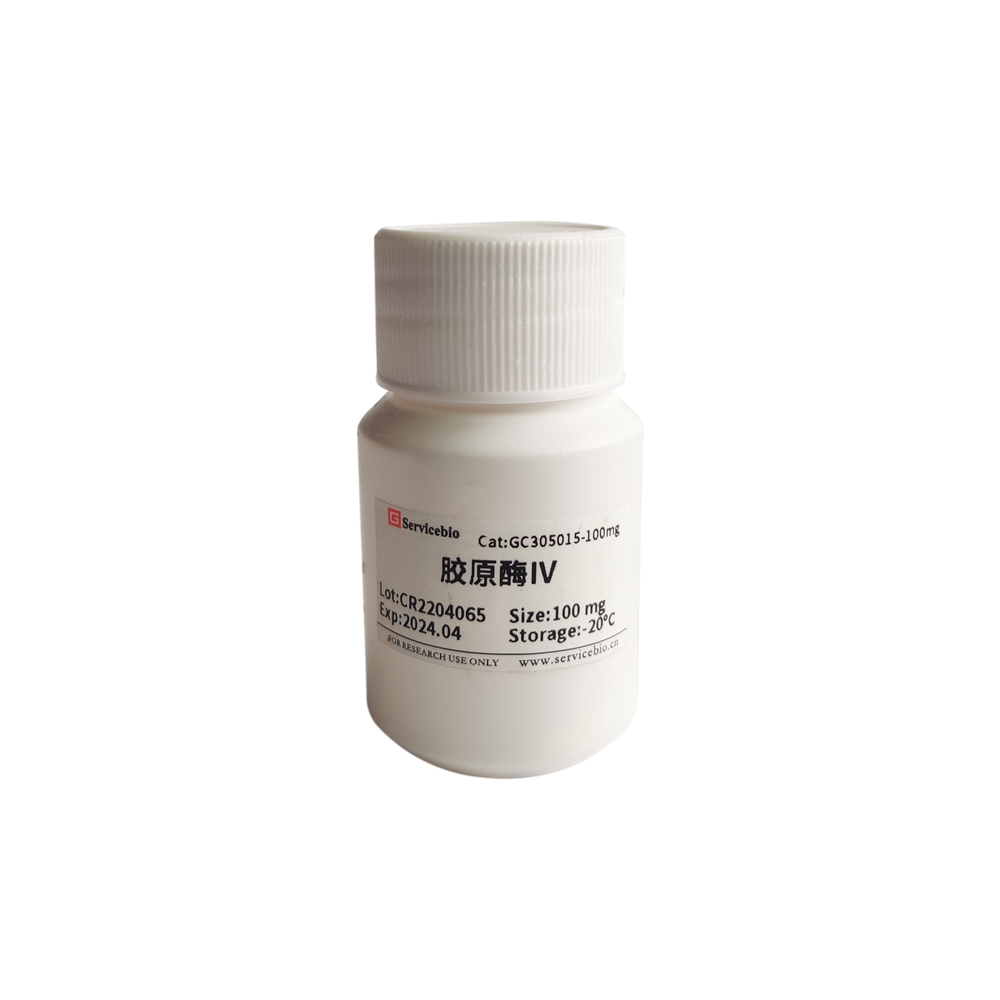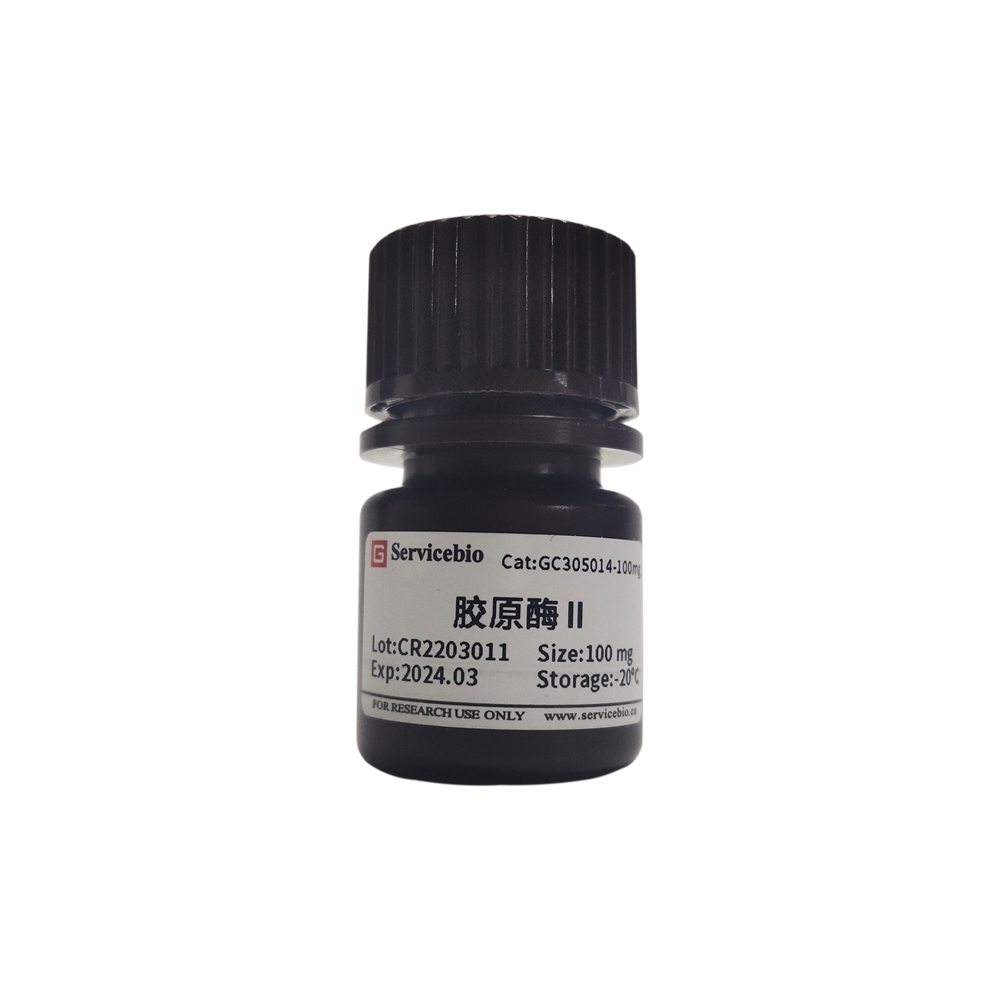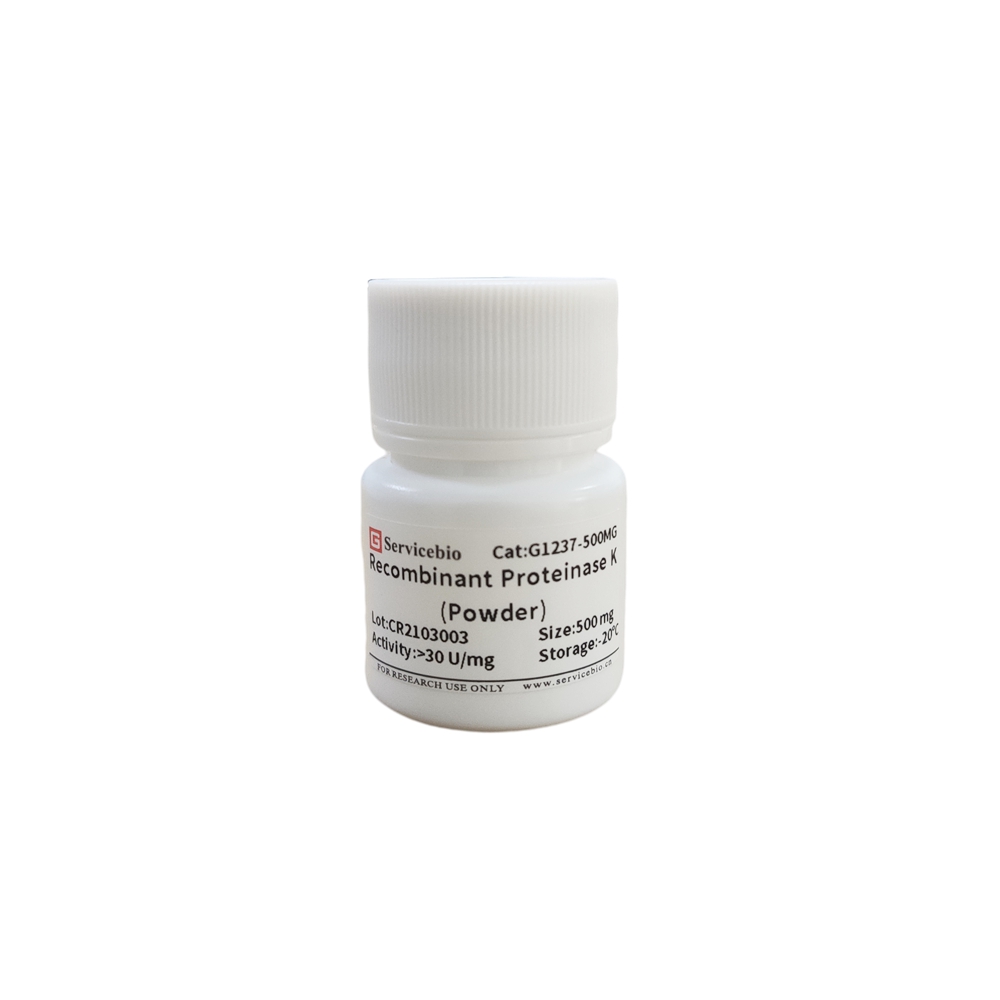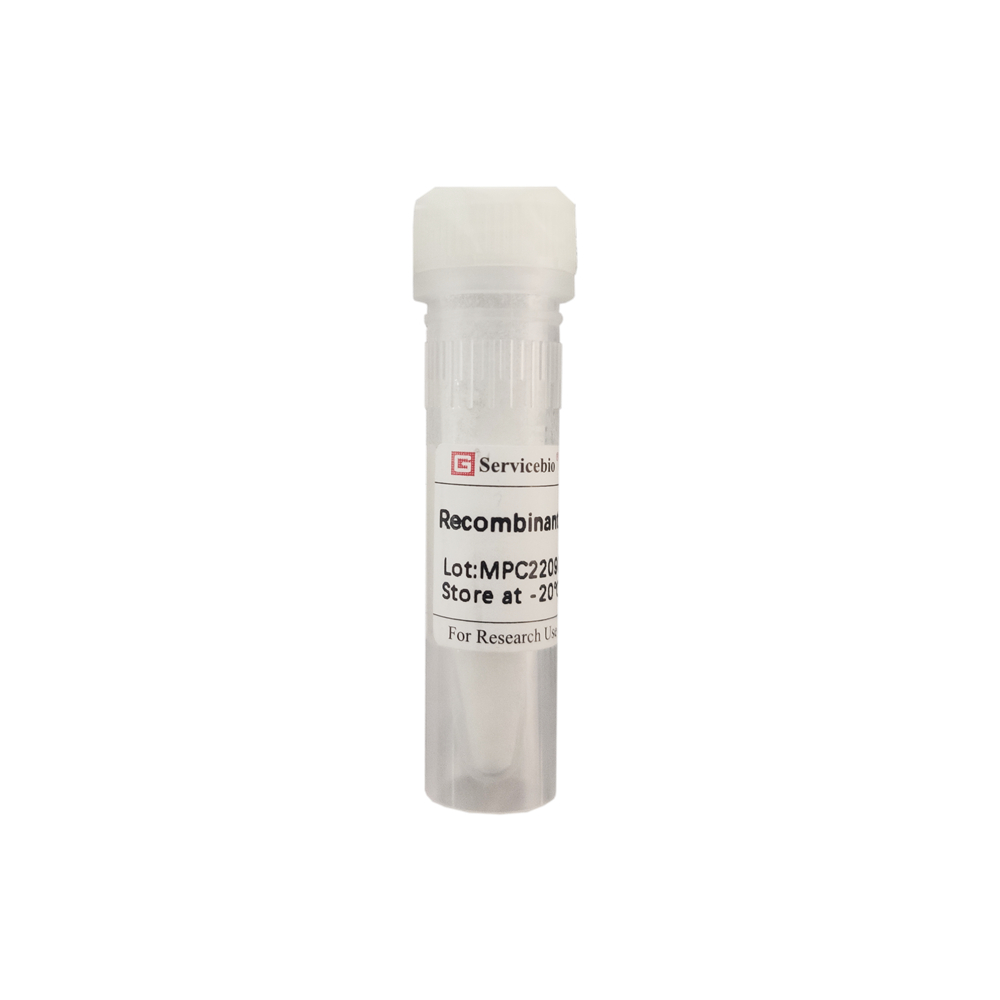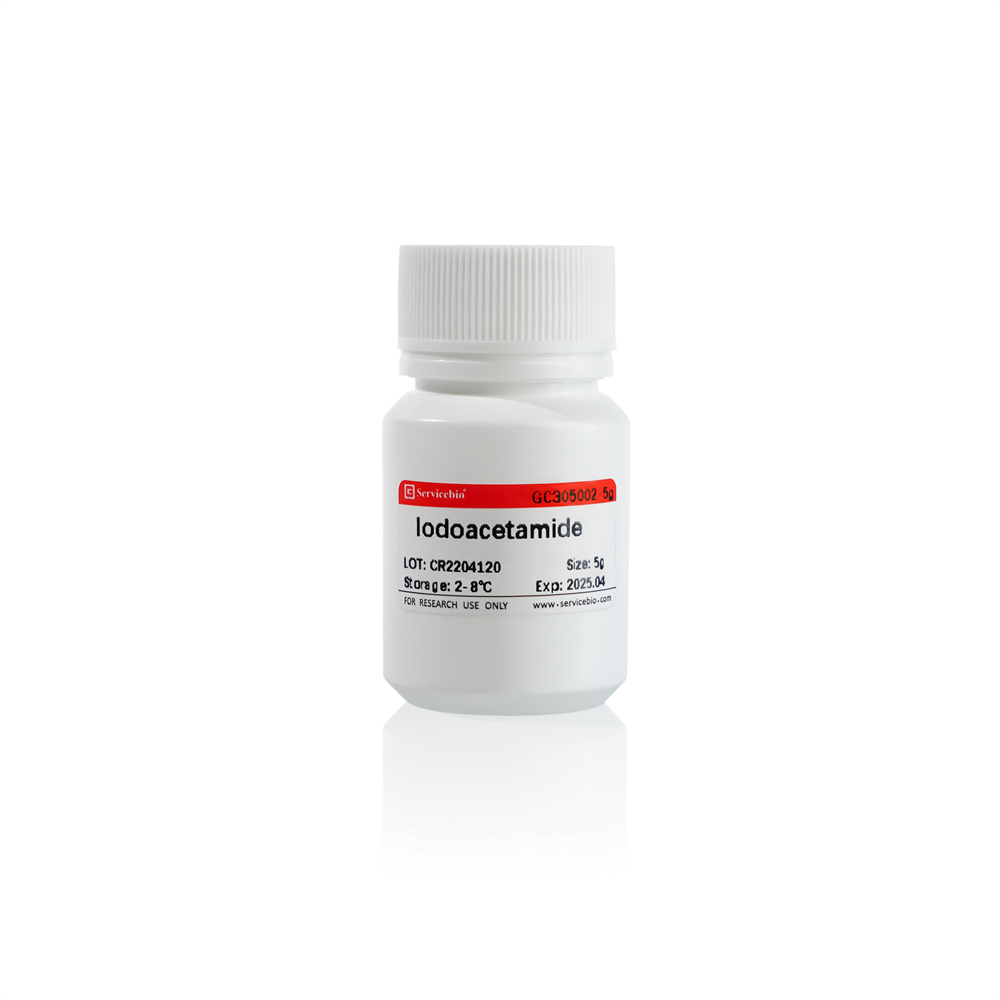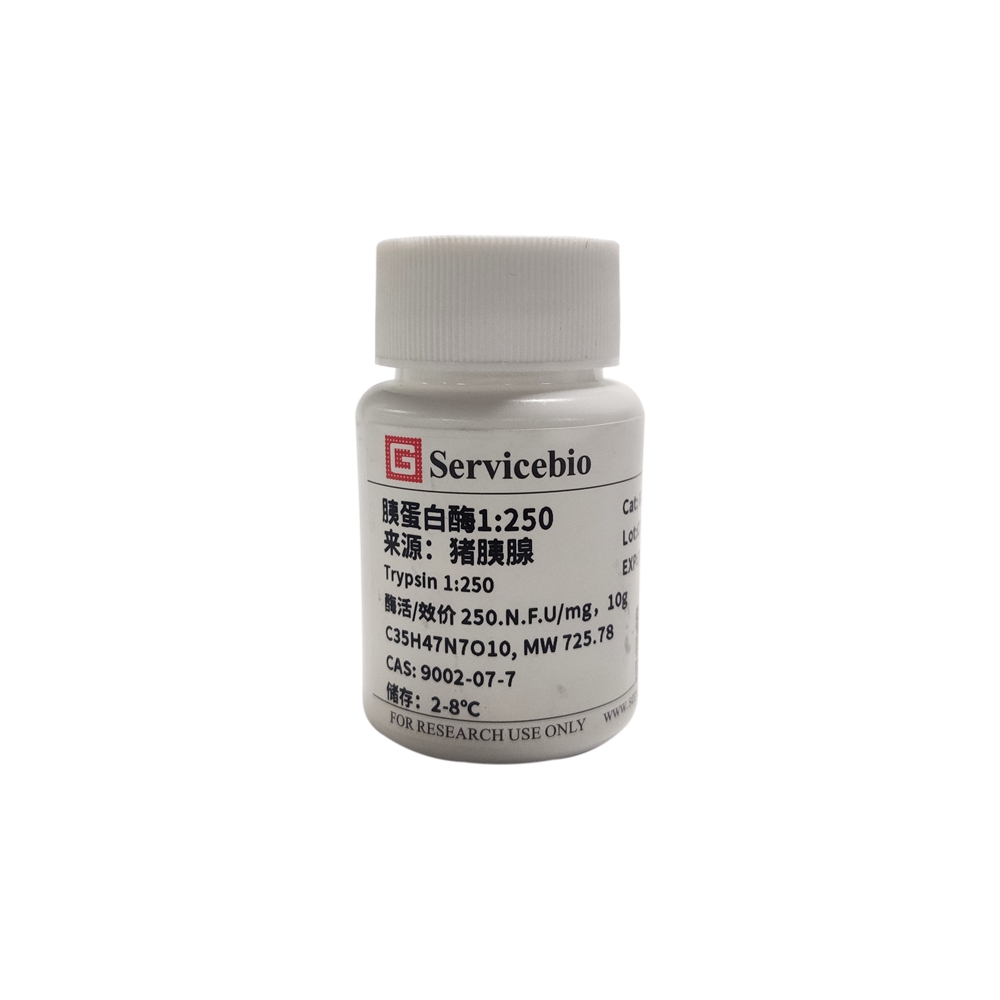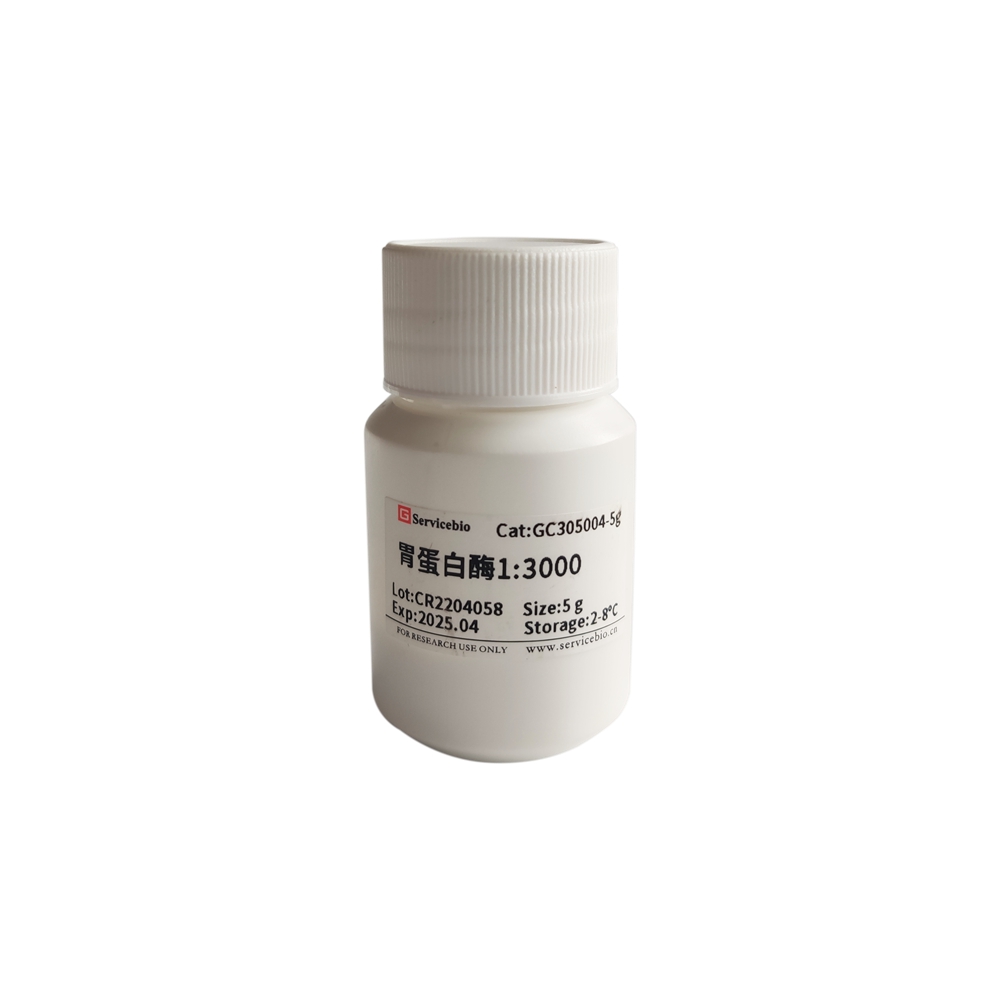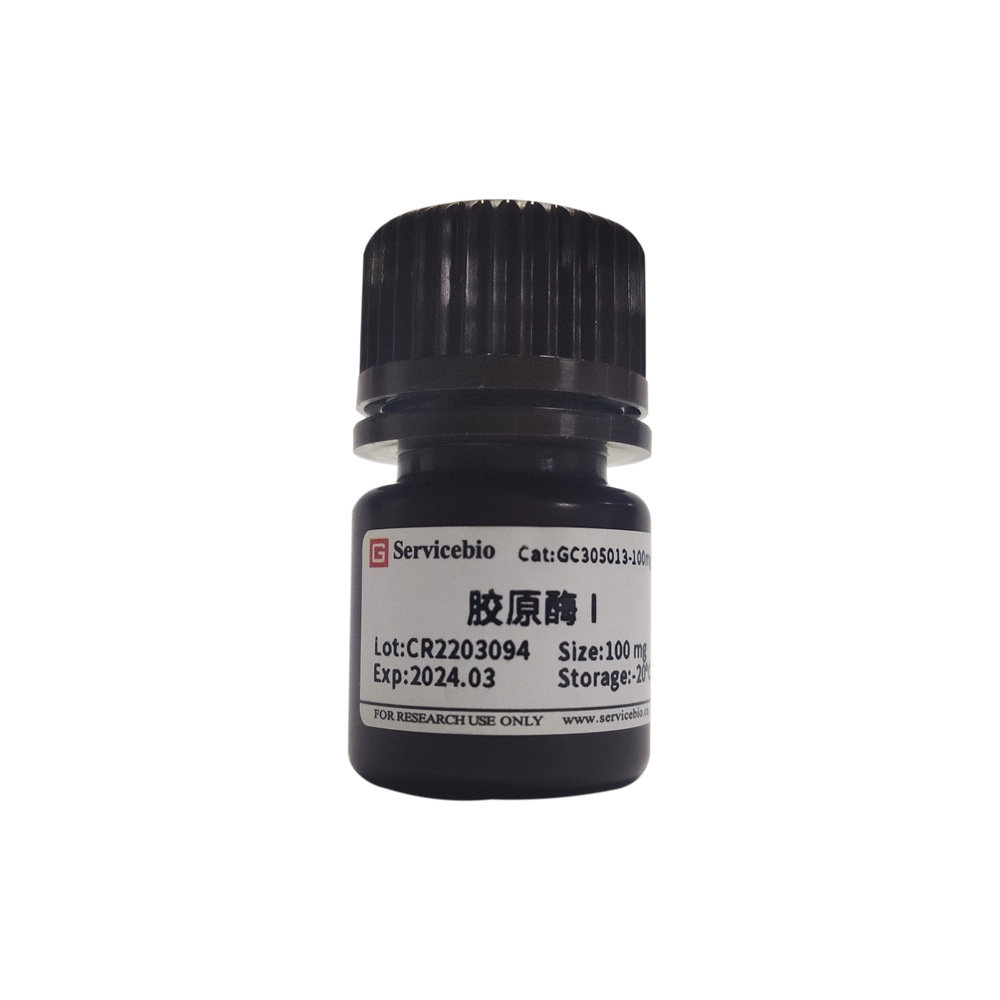Description
Product Introduction:
Collagenase is a proteolytic enzyme commonly used to digest extracellular matrix proteins. As a peptide bond-cleaving enzyme, collagenase specifically recognizes the Pro-X-Gly-Pro sequence (which is highly frequent in collagen but rare in other proteins) and cleaves the peptide bond between the amino acid (X) and glycine (Gly). Commercial collagenase is derived from Clostridium histolyticum, a tissue-dissolving bacterium, and is a crude enzyme extract. It is classified into different types, including Type I collagenase, Type II collagenase, Type III collagenase, Type IV collagenase, and Type V collagenase, based on their composition and degradation characteristics, each with different applications.
Type I collagenase contains a relative balance of multiple enzyme activities, including collagenase, caseinase, clostripain, and trypsin, and is typically used for the preparation of primary cells from epithelial tissues, liver, lung, adipose tissue, and adrenal glands.
Type II collagenase has higher clostripain activity and is commonly used for the preparation of primary cells from heart, bone, liver, thymus, salivary glands, and cartilage.
Type III collagenase has lower secondary protease activity and is commonly used for the preparation of primary cells from breast tissue.
Type IV collagenase has lower trypsin activity and is typically used for the preparation of pancreatic islet cells and myeloid cells.
Type V collagenase is a partially purified form with higher collagenase and caseinase activities and lower trypsin levels, suitable for the preparation of pancreatic islets.
This product is Type IV collagenase.
Note: The provided translation is a direct translation of the content. Some technical terms may have alternative names or variations in English.
Basic Properties:
English Name: Collagenase IV Alias: Clostripain A CAS: 9001-12-1 Enzymatic Activity: ≥160 CDU/mg, solid Appearance: Brown or brownish crystalline powder Storage Conditions: -20°C Unit: Bottle Specification: 100mg/bottle MDL Number: MFCD00130830 EC Number: 232-582-9 Related Categories: Protein Derivatives Solubility: Easily soluble in water Shelf Life: 24 months
CDU Definition: Under the conditions of 37°C, pH 7.4, and the presence of calcium ions, collagenase hydrolyzes collagen protein from bovine Achilles tendon for five hours, producing 1 μmol of leucine. This is defined as one casein digestion unit (CDU).
Note: The provided translation is a direct translation of the content. Some technical terms may have alternative names or variations in English.
Storage and Transportation:
The product should be transported with dry ice and stored at -20°C.
Instructions for Use:
The usage and dosage of the biochemical reagent mainly depend on the customer’s experimental purpose and the experimental methods described in existing literature or books. The following instructions are for reference only.
- Preparation of Collagenase Storage Solution:
Add 100µL of Ca2+- and Mg2+-containing HBSS (Hank’s Balanced Salt Solution with Ca2+ and Mg2+) to each vial of 100mg collagenase. Gently vortex to ensure complete dissolution, preparing a storage solution with a concentration of 1g/ml (i.e., 1000×). Then, filter sterilize using a low protein-binding 0.22μm filter membrane, divide into smaller aliquots, and store in the dark at -20°C.
Thaw on ice before use and avoid repeated freeze-thaw cycles. The commonly used concentrations for tissue and cell dispersion are: 0.5-2.5mg/ml, and for cartilage digestion, the commonly used concentration is 1-2mg/ml. The optimal working concentration should be determined based on specific experimental conditions or by referring to relevant literature.
- Tissue Dissection:
- Use sterile surgical knives or scissors to cut the tissue into 3-4mm tissue fragments.
- Wash the tissue fragments several times with Ca2+- and Mg2+-containing HBSS.
- Add a sufficient amount of Ca2+- and Mg2+-containing HBSS to immerse the tissue fragments and add collagenase to the desired working concentration.
- Incubate at 37°C for 4-18 hours. Using a horizontal shaker and supplementing digestion with 3mM CaCl2 can improve digestion efficiency.
- Dispersed cells can be collected using stainless steel or nylon mesh strainers and kept aside. For undissociated tissues, add an appropriate volume of fresh collagenase working solution and continue incubating at 37°C.
- Wash the collected cells several times with collagenase-free HBSS.
- Resuspend the cells in cell culture medium, and use an automated cell counter or other methods to determine the cell viability density.
- Seed the cells on cell culture dishes using suitable cell culture medium.
Precautions:
For your safety and health, please wear lab coat and disposable gloves while handling.
Safety Information:
Warning Statements:
P261, P305+P351+P338, P342+P311
WGK:
1
Note: The product may undergo optimization and upgrades. Please refer to the actual label information.
This product is intended for research use only and not for clinical diagnosis.
Instructions for Use:
The usage and dosage of biochemical reagents should be determined based on the customer’s experimental purposes and existing literature or experimental methods in books. The following instructions are provided for reference only.
- Preparation of Collagenase Storage Solution:
Add 100µL of HBSS (Hank’s balanced salt solution) containing Ca2+ and Mg2+ to each vial of 100mg collagenase. Gently vortex and shake to dissolve completely, preparing a storage solution with a concentration of 1g/ml (or 1000×). Then, filter the solution through a low-protein-binding 0.22μm membrane to sterilize and divide into smaller aliquots. Store the aliquots at -20°C, protected from light.
Thaw the solution on ice before use, avoiding repeated freeze-thaw cycles. The commonly used concentrations for tissue and cell dispersion are 0.5-2.5mg/ml, while for cartilage digestion, the commonly used concentration is 1-2mg/ml. The optimal working concentration should be determined based on specific experimental conditions or by referring to relevant literature.
- Tissue Dissociation:
- Use a sterile surgical knife or scissors to cut the tissue into pieces of 3-4mm in size.
- Wash the tissue pieces several times with HBSS containing Ca2+ and Mg2+.
- Add an adequate amount of HBSS containing Ca2+ and Mg2+ to submerge the tissue pieces, and add collagenase to the desired working concentration.
- Incubate at 37°C for 4-18 hours. The use of a horizontal shaker and supplementation with 3mM CaCl2 during digestion can improve digestion efficiency.
- Dispersed cells can be collected using stainless steel or nylon mesh filters and kept for further use. Undissociated tissues can be incubated with an additional appropriate amount of fresh collagenase working solution at 37°C.
- Wash the collected cells several times with collagenase-free HBSS.
- Resuspend the cells in cell culture medium and use an automated cell counter or other methods to determine the density of viable cells.
- Inoculate the cells onto cell culture dishes using suitable cell culture medium.
Precautions:
For your safety and health, please wear laboratory attire and disposable gloves during the operation.
Safety Information:
Warning Statements: P261, P305+P351+P338, P342+P311
WGK: 1
Note: Product improvements may occur. Please refer to the actual label information.
This product is for research purposes only and is not intended for clinical diagnosis.

